

Surfing is one of the most exhilarating and challenging sports out there. The freedom and thrill of riding a wave are unique and immensely satisfying. But if you've never stood on a surfboard before, it’s natural to feel a bit nervous. This guide is designed to help you understand the initial steps, what you should know, and how to prepare for your first surfing experience.
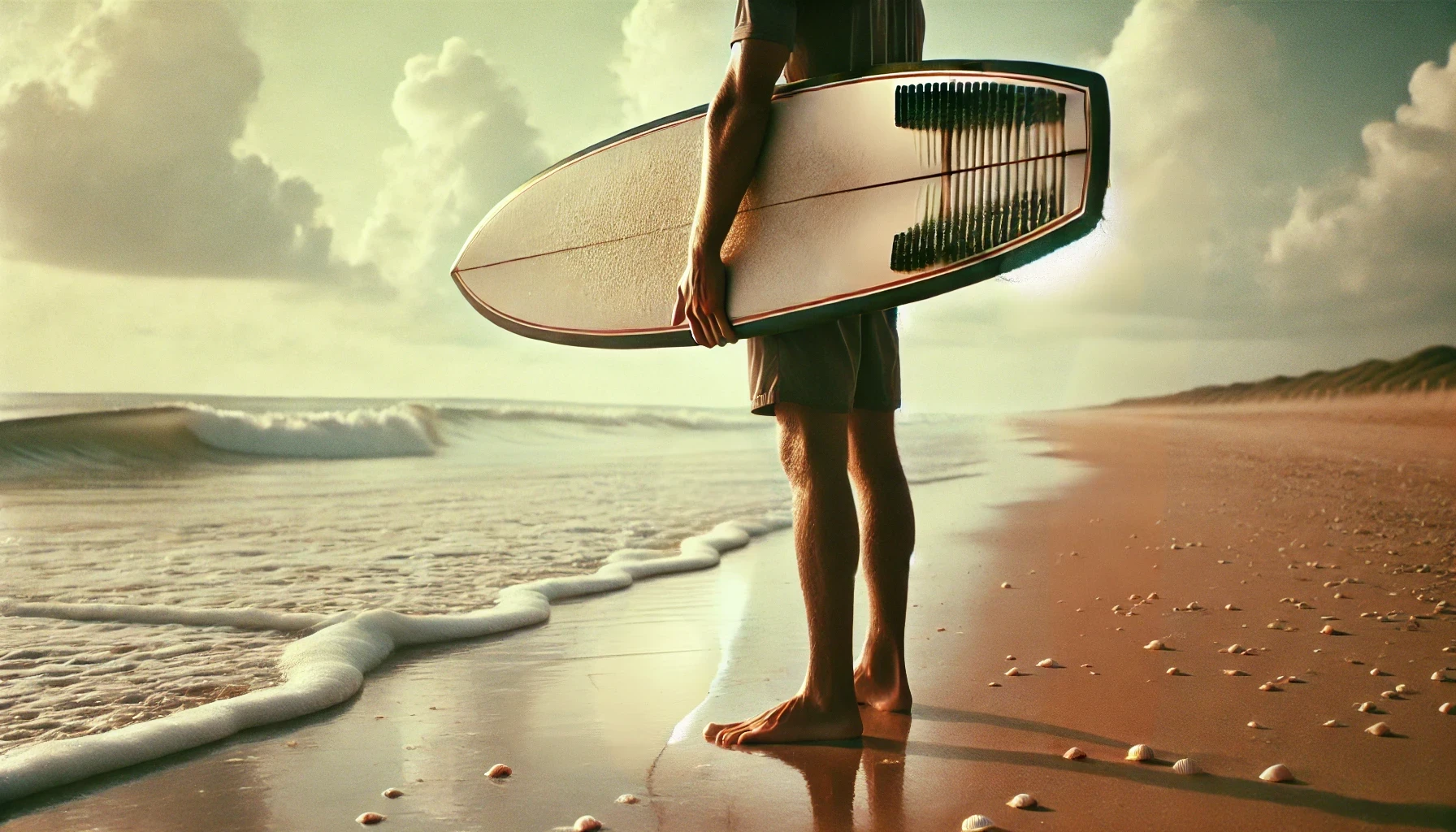
Surfing requires patience and focus. You might not catch the first wave you try for, and you might spend quite a bit of time in the water before you manage a successful ride. This is part of the sport’s charm—learning to go with the flow of nature and embracing small challenges along the way.
Surfing engages all muscle groups, especially the core and arms. To prepare for surfing, try doing exercises like planks, push-ups, and swimming to strengthen those areas. Building endurance is also essential, as paddling in the waves can be quite intense.
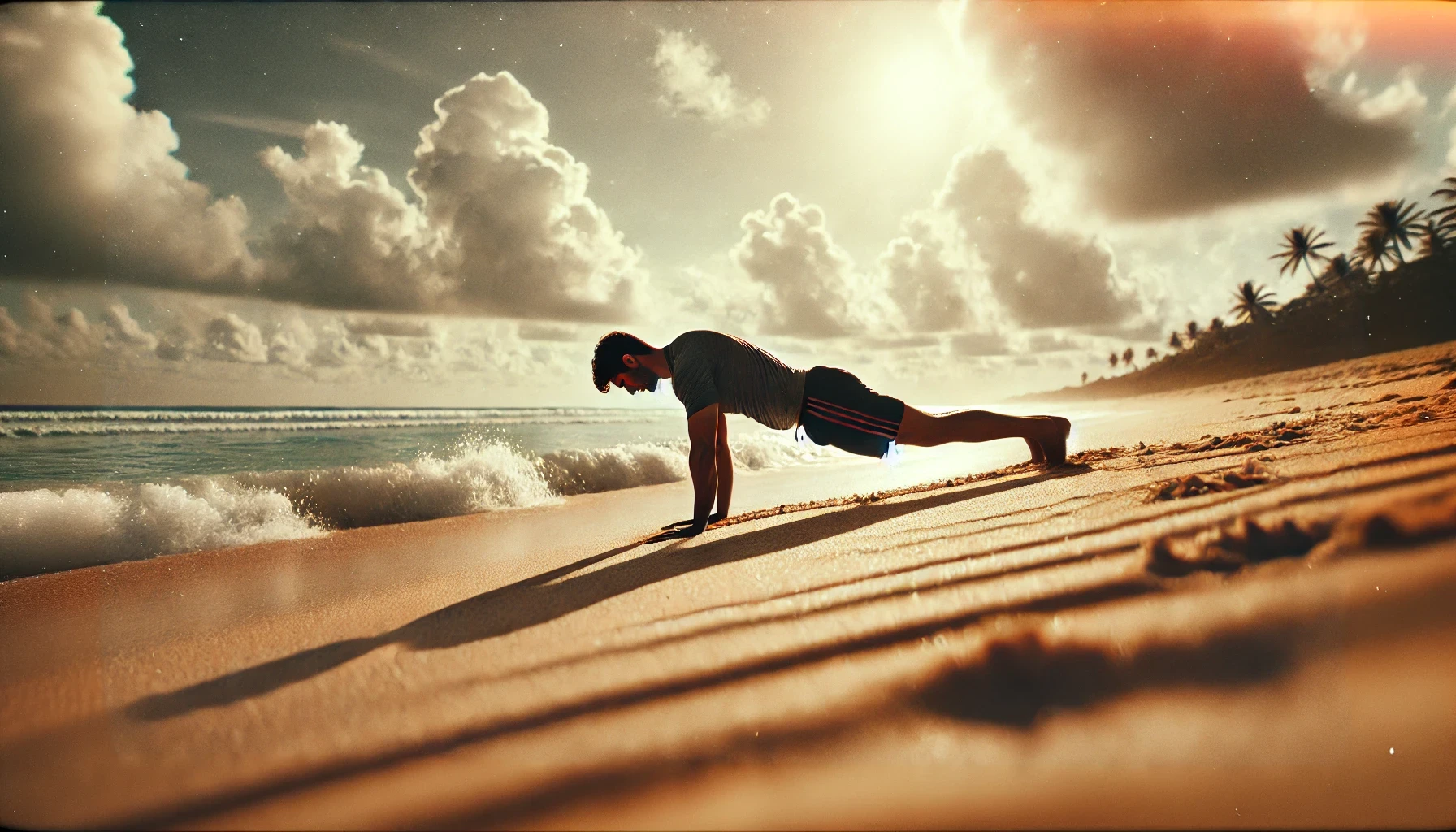
Not all surfboards are suitable for beginners. Generally, a longer and wider board (longboard) or a foam surfboard is ideal, as it offers more stability and is easier to balance on. This type of board will help you learn the basics and get comfortable standing on the wave.
Surf gear, like a wetsuit or rash guard, is important to protect you from the sun and prevent skin chafing. If you’re planning to surf in colder waters or during winter, a wetsuit will also keep you warm.
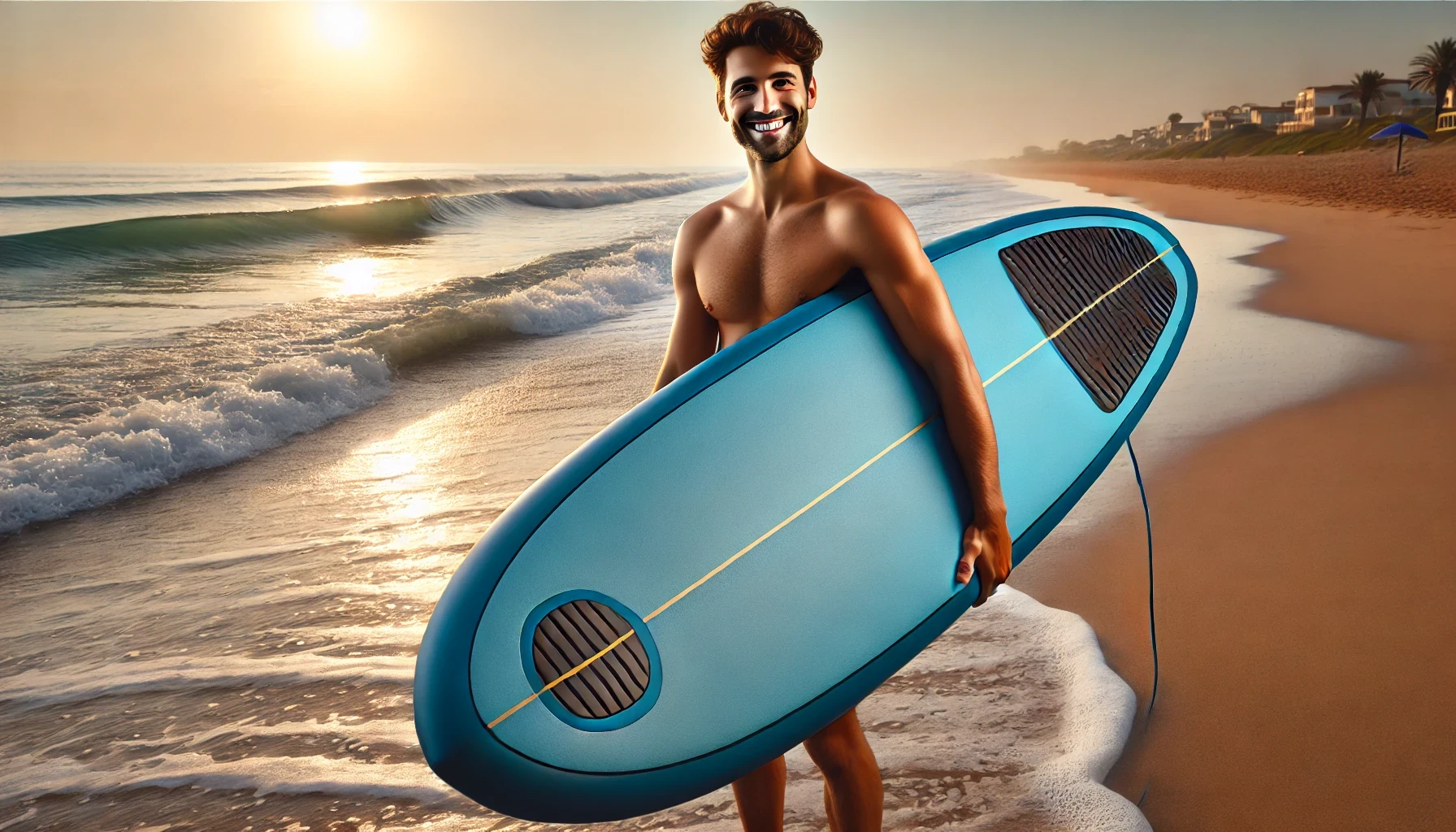
Ready to find your perfect beginner surfboard? Take our surfboard questionnaire!
Before heading into the water, practice the movement on the beach. Lie down on your board, place your hands under your shoulders, and push up into a standing position. Try to keep your balance, bending your knees slightly to lower your center of gravity.
Balance is key in surfing. Keep your center of gravity low by slightly bending your knees and looking ahead instead of down. A stable stance will allow you to manage the wave more effectively.
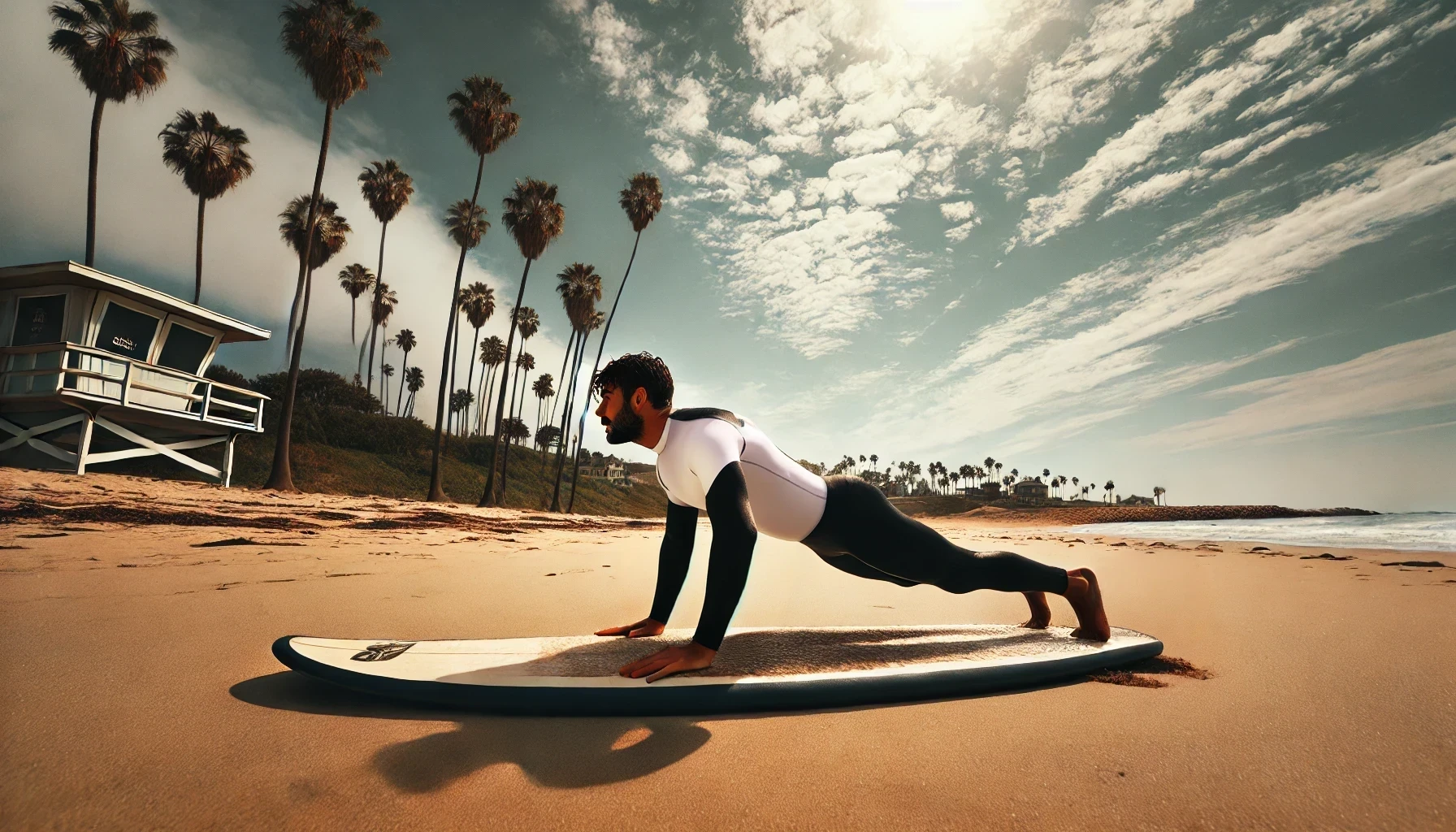
Surfing for the first time is exciting, but not every ocean day is ideal for beginners. Large waves and strong winds can be overwhelming, so picking the right day will make it easier to start with calm, manageable conditions.
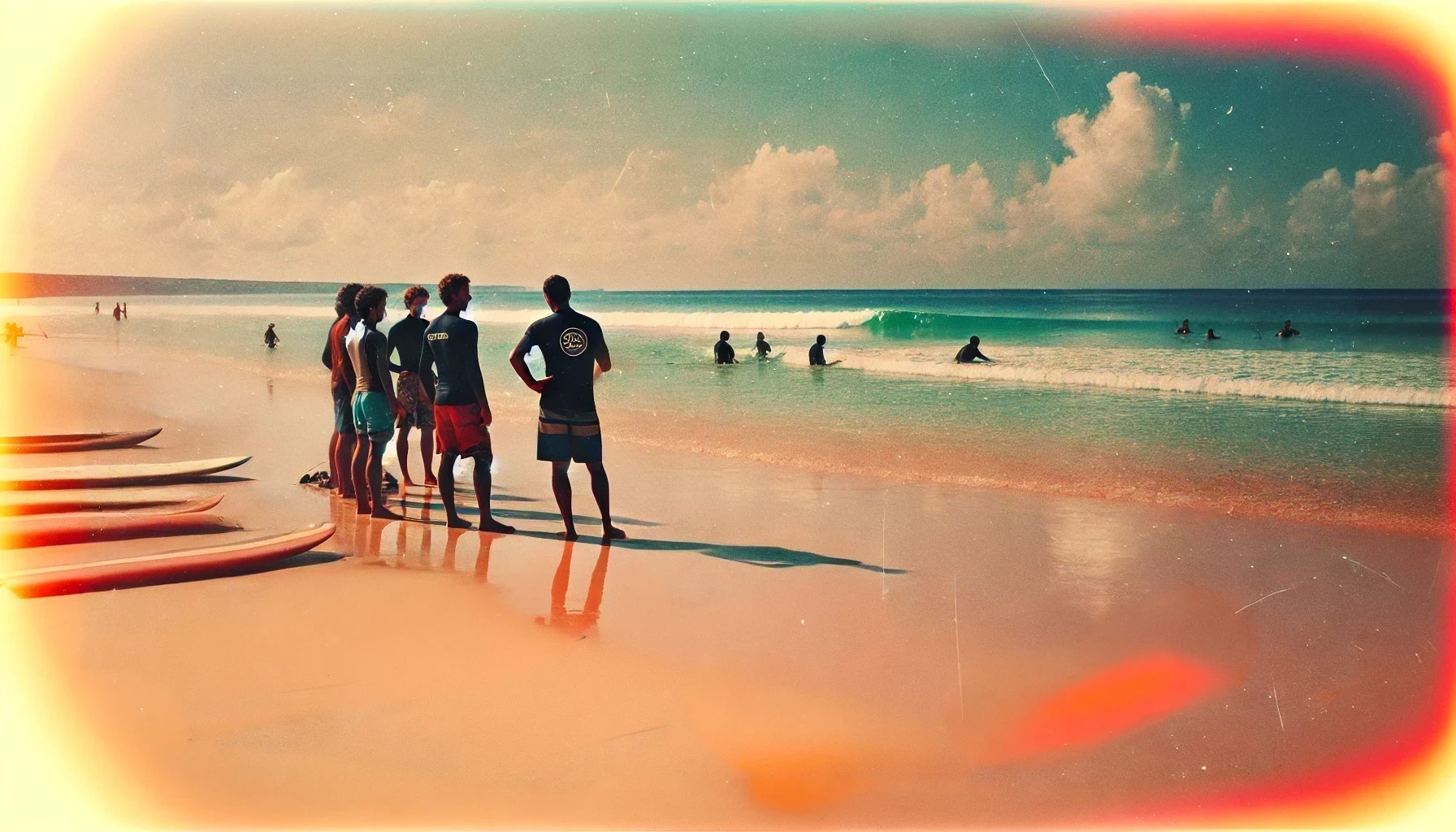
Like with any new skill, some tips can make your first surfing experience more enjoyable:
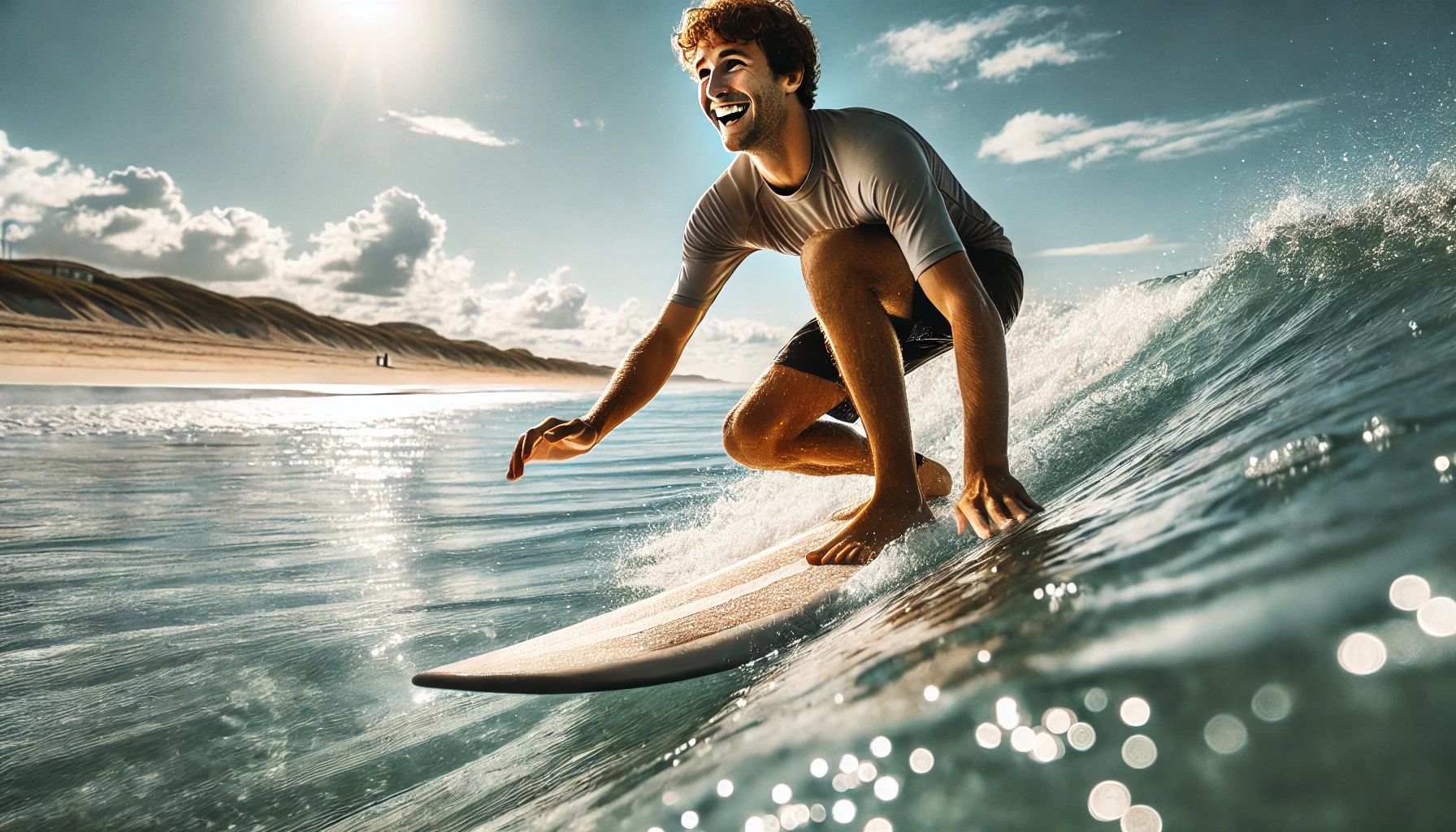
Thinking about getting your own surfboard? Take our surfboard questionnaire to find the right fit!
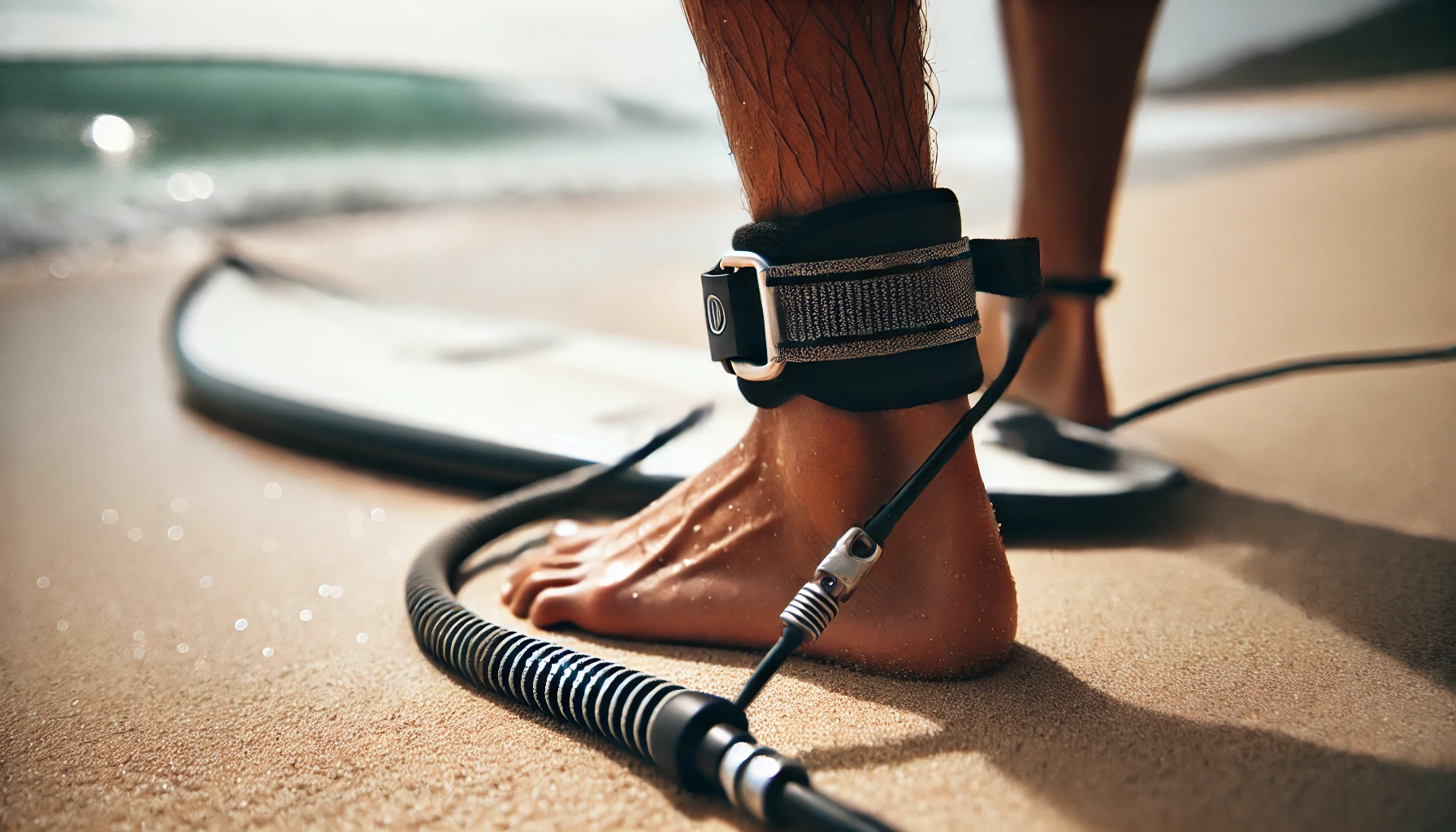
Surfing opens up a world of enjoyment, challenge, and fulfillment. Although the first steps may seem complicated, with some patience and commitment, you’ll discover just how enjoyable and liberating surfing can be. Stay safe, enjoy the process, and remember—the journey is a core part of the experience!
Ready to take the next step? Start your journey with the surfboard questionnaire and find your ideal surfboard today!